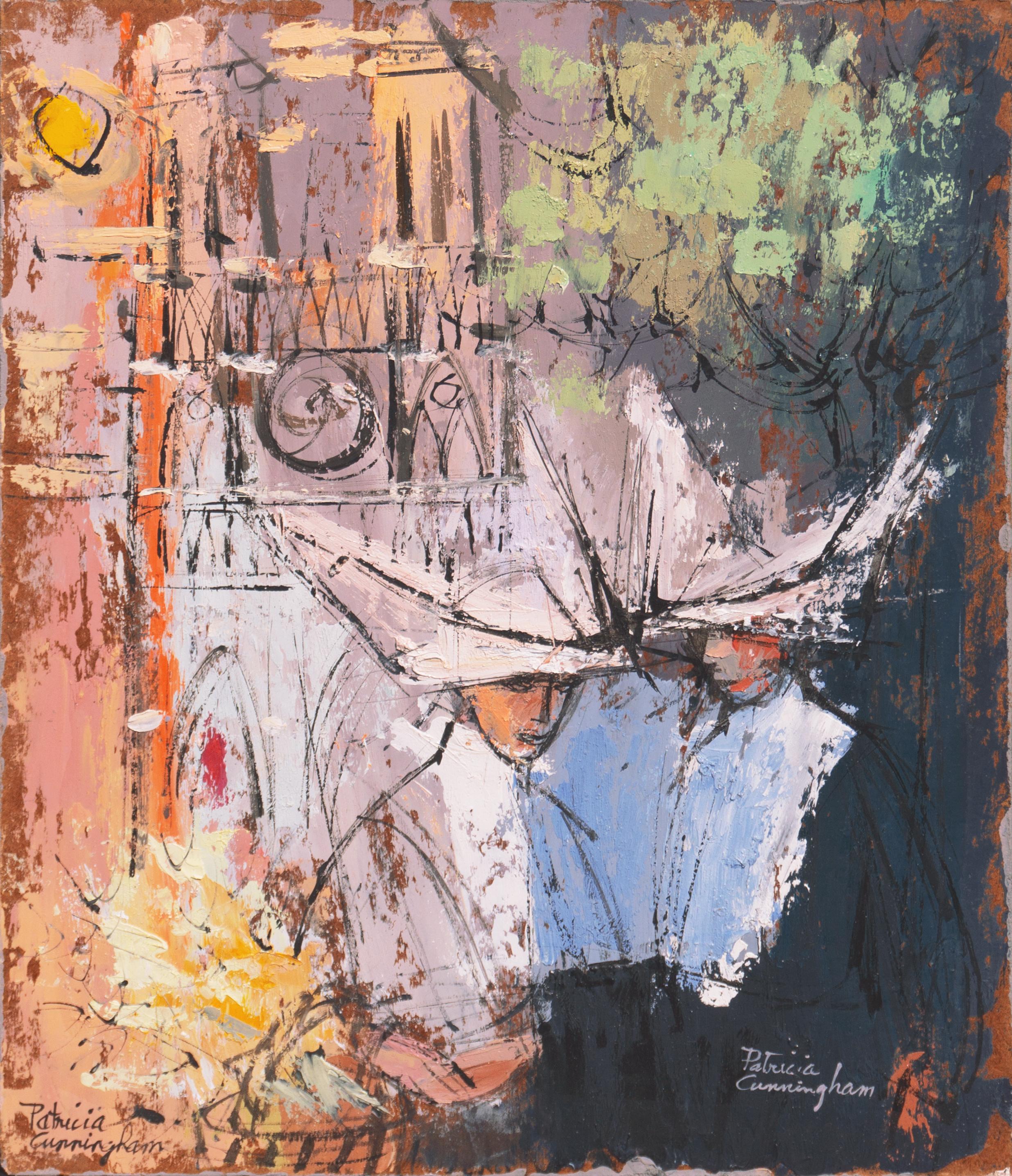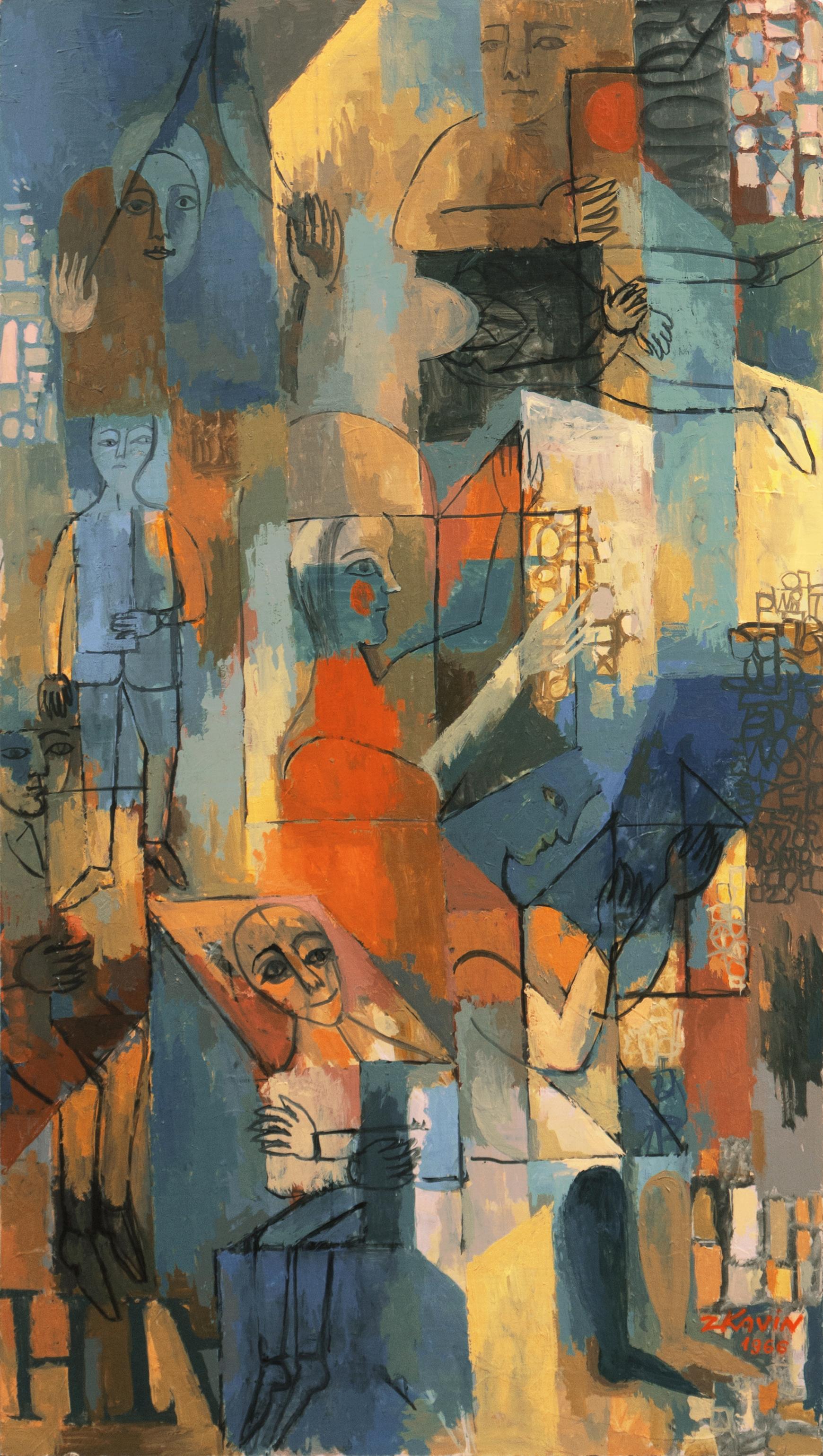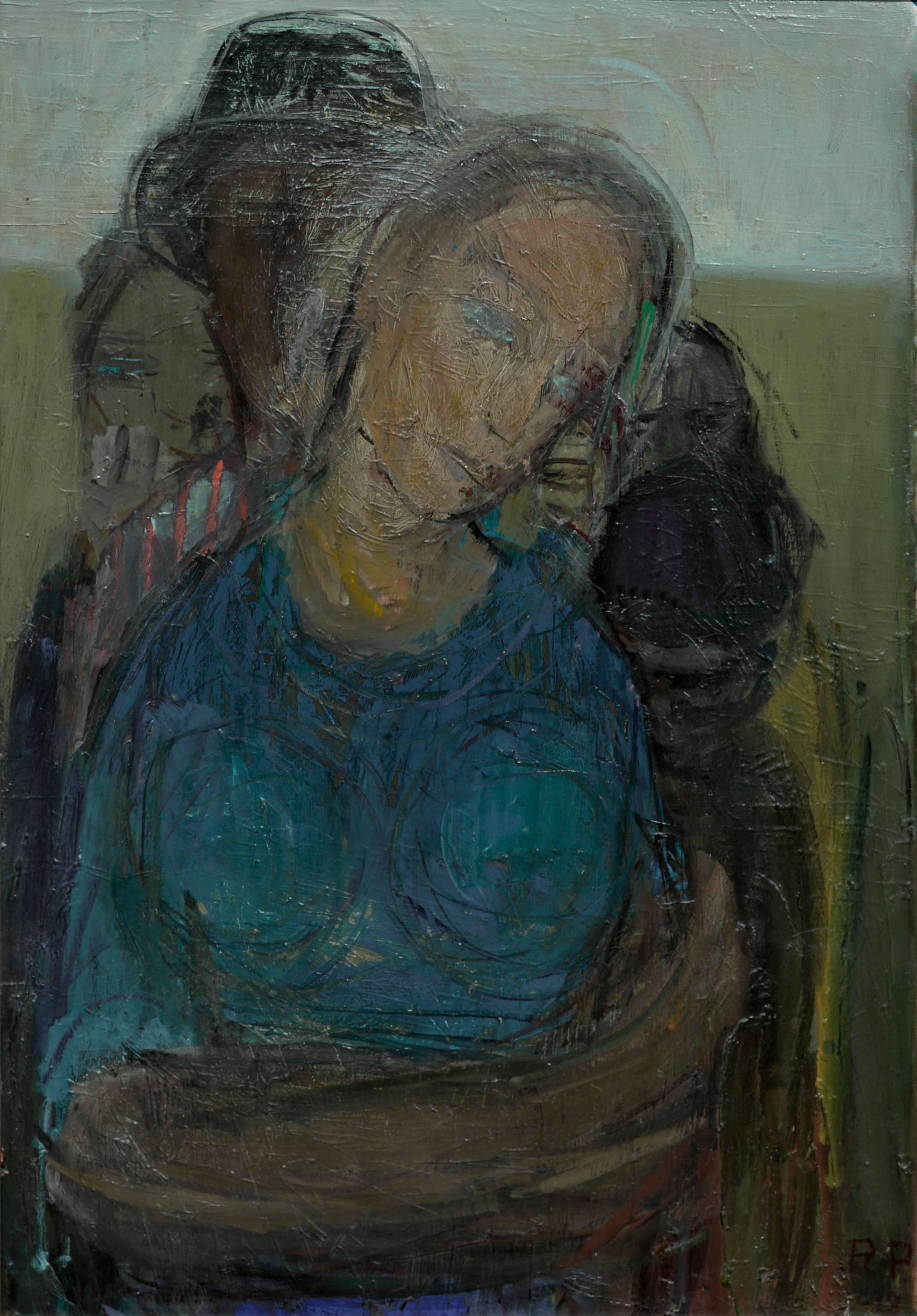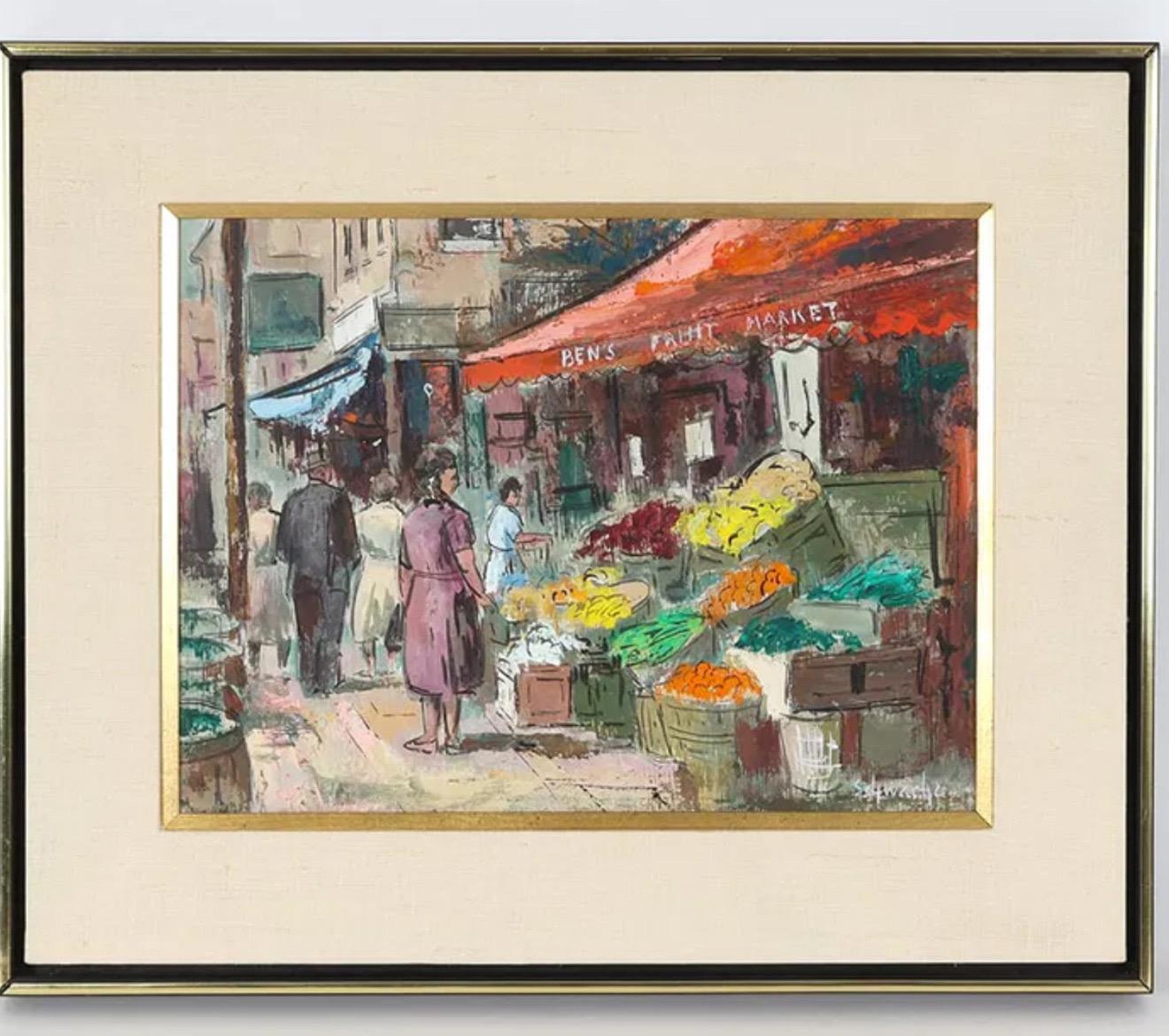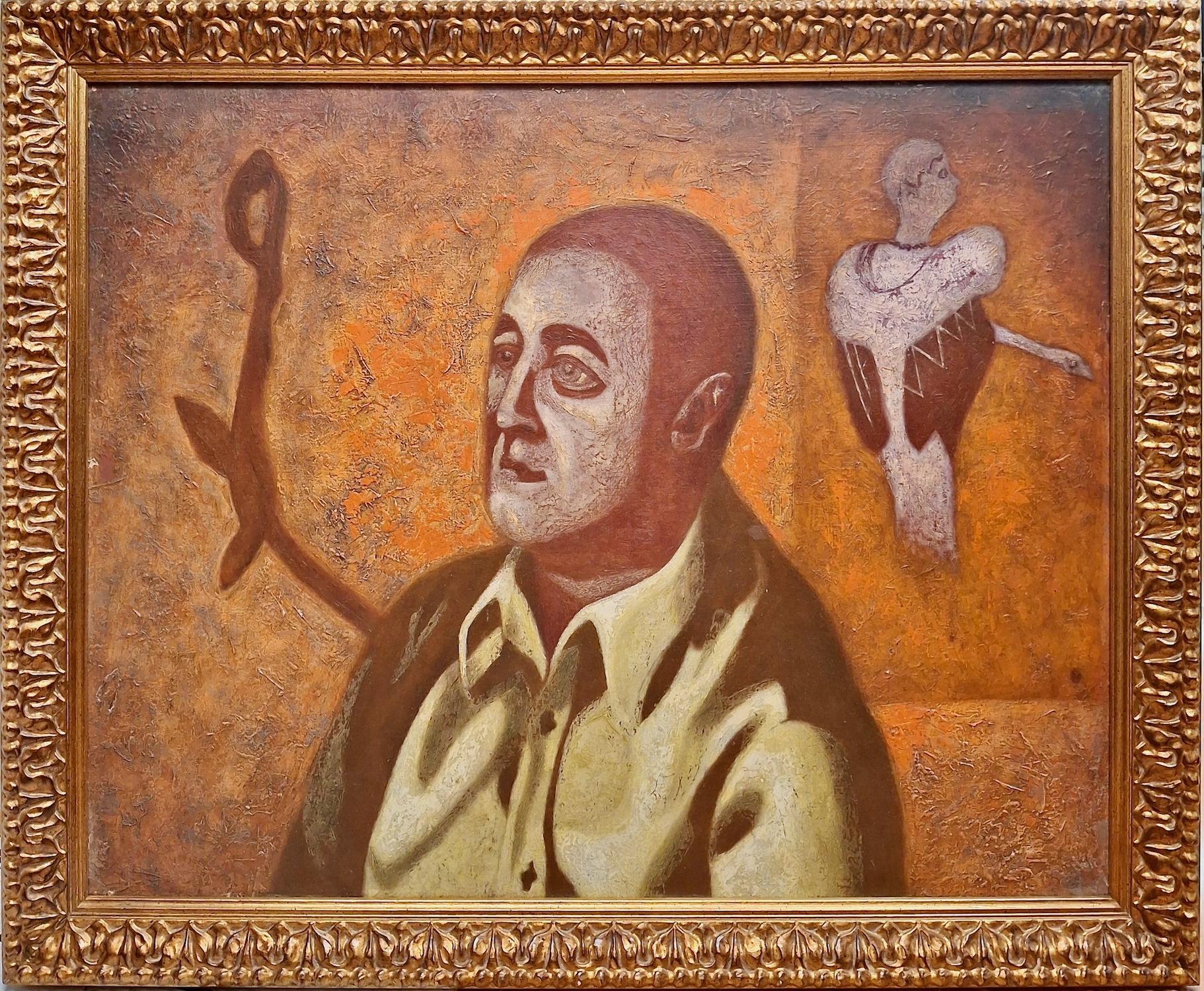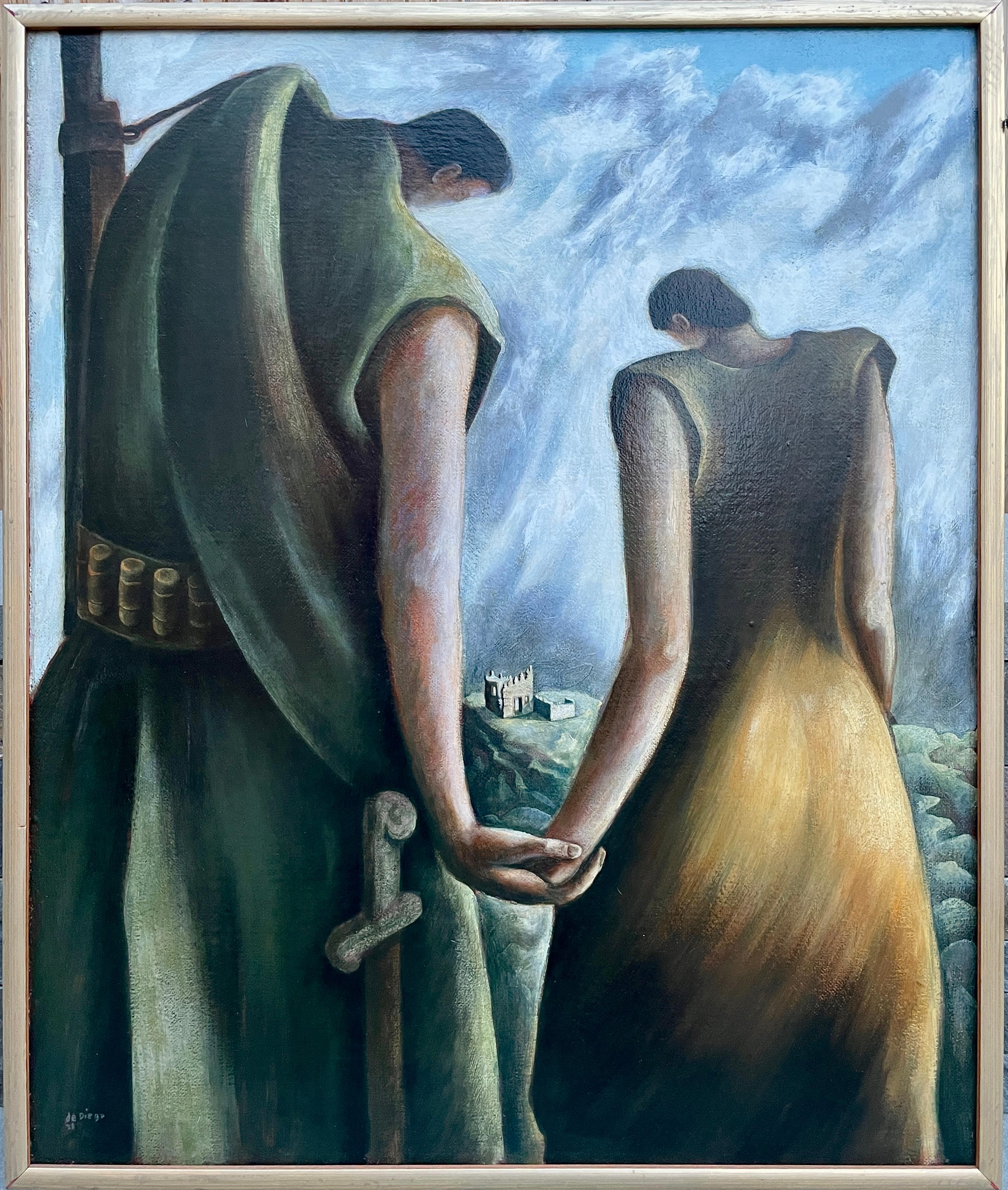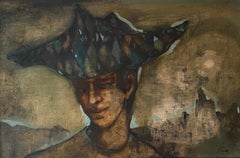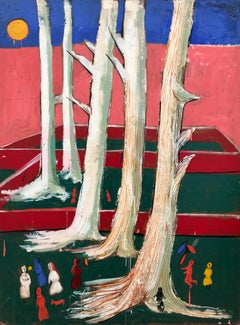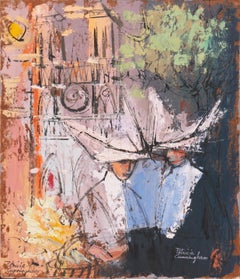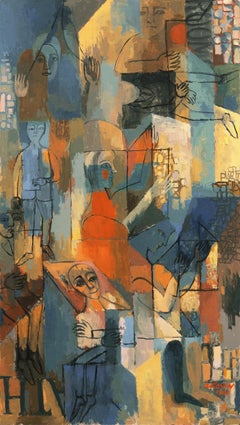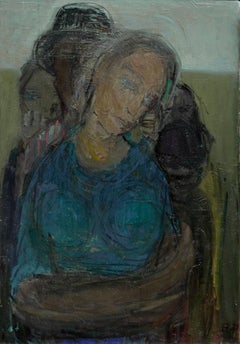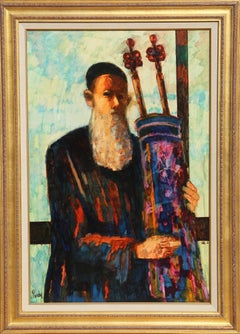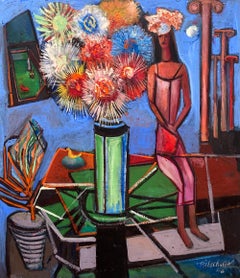
"Untitled"
View Similar Items
Want more images or videos?
Request additional images or videos from the seller
1 of 12
Nahum Tschacbasov"Untitled"1946
1946
$8,500List Price
About the Item
- Creator:Nahum Tschacbasov (1899-1984, American)
- Creation Year:1946
- Dimensions:Height: 30 in (76.2 cm)Width: 26 in (66.04 cm)Depth: 1.25 in (3.18 cm)
- Medium:
- Movement & Style:
- Period:
- Condition:Unframed.
- Gallery Location:Southampton, NY
- Reference Number:1stDibs: LU1412236323
About the Seller
5.0
Platinum Seller
Premium sellers with a 4.7+ rating and 24-hour response times
Established in 1977
1stDibs seller since 2013
536 sales on 1stDibs
Authenticity Guarantee
In the unlikely event there’s an issue with an item’s authenticity, contact us within 1 year for a full refund. DetailsMoney-Back Guarantee
If your item is not as described, is damaged in transit, or does not arrive, contact us within 7 days for a full refund. Details24-Hour Cancellation
You have a 24-hour grace period in which to reconsider your purchase, with no questions asked.Vetted Professional Sellers
Our world-class sellers must adhere to strict standards for service and quality, maintaining the integrity of our listings.Price-Match Guarantee
If you find that a seller listed the same item for a lower price elsewhere, we’ll match it.Trusted Global Delivery
Our best-in-class carrier network provides specialized shipping options worldwide, including custom delivery.More From This Seller
View All“Woman and Birds”
By Nahum Tschacbasov
Located in Southampton, NY
Mid-century oil on masonite modern painting by the well known Russian/American artist, Nahum Tschacbasov. Signed top left and dated 1949. Titled verso. Condition is fair. Provenanc...
Category
1940s American Modern Figurative Paintings
Materials
Masonite, Oil
$4,600 Sale Price
20% Off
“The Jester”
By Richard Kirk
Located in Southampton, NY
Intriguing oil on masonite painting by the American artist Richard Kirk of a young boy wearing a jesters hat. Signed lower right. Circa 1960. Condition is excellent. The painting is in it original painted wood and intentionally distressed frame. Overall measurements framed 22.5 by 30.5 inches. Provenance: Sarasota, Florida collector.
My first recollections were of drawing. I don't remember telling people that I wanted to be an artist. I just loved drawing. At times, it was all that occupied my young mind. My passion for drawing was instantly converted to a passion for painting after I met my best friend's father, Oleg Stavrowsky...
Category
1960s Modern Figurative Paintings
Materials
Masonite, Oil
$1,600 Sale Price
27% Off
“Children in the Park”
By Nahum Tschacbasov
Located in Southampton, NY
Oil on masonite encaustic painting by the well known Russian/American artist, Nahum Tschacbasov. Signed and dated top right, 1952. In good to very good condition. Provenance: Est...
Category
1950s Modern Figurative Paintings
Materials
Masonite, Oil
$7,600 Sale Price
20% Off
“The Wizard”
By Nahum Tschacbasov
Located in Southampton, NY
Here for your consideration is a mid century modern oil painting on masonite by the well known Russian/American artist, Nahum Tschacbasov. The painting depicts an old man with a long wispy beard holding a group of birds. Signed lower right and dated 1954. Presently unframed. Condition is very good. Provenance: The estate of the artist Nahum Tschacbasov.
Nahum Tschacbasov
Biography :
Russian-American artist Nahum Tschacbasov (1899-1984) is known for his cubo-surrealistic works which feature a strong psychological element. Some of his work bears a resemblance to work of another Russian-American artist--David Burliuk. He was somewhat of a late starter, moving to Paris in 1932 to study under Adolph Gottlieb, Marcel Gromaire and Fernand Leger. He had his first exhibition in Paris in 1934. He then returned to the US where he joined Rothko and Gottlieb at the Galery Seccession. He was one of the co-founders of The Ten, a group of social conscious abstract painters which included Rothko, Gottlieb, Joseph Solman and Ilya Bolotowsky, among others.
In 1944, he began to work at Stanley Hayter's Atelier 17, a center for surrealistic ideas. Between 1936 and 1943, he had five one-man exhibitions at the ACA Galleries and participated in five group shows. He also exhibited at the Whitney, the Pennsylvania Academy of Fine Arts, the Knox Albright Museum, the Chicago Institute of Fine Art and Corcoran, among others. His work can be found in the permanent collections of the Met, the Whitney, the Brooklyn Museum and the Jewish Museum.
Tschacbasov has been the subject of two recent retrospective at Fletcher Gallery, Woodstock, NY and Arthur...
Category
1950s Modern Figurative Paintings
Materials
Masonite, Oil
"Woman with Flowers"
By Nahum Tschacbasov
Located in Southampton, NY
Oil on masonite painting by the well known Russian/American artist, Nahum Tschacbasov. Signed lower right and dated 1946. In good condition. The painting is framed in a contemporary...
Category
1940s Modern Figurative Paintings
Materials
Masonite, Oil
“Going for the Mail”
By Michael Budden
Located in Southampton, NY
Oil paint on masonite hardboard by the well known American contemporary artist Michael Budden. Signed lower right. Signed, dated and titled verso. Salmagundi Club exhibition label v...
Category
Early 2000s Post-Impressionist Figurative Paintings
Materials
Masonite, Oil
$1,500 Sale Price
42% Off
You May Also Like
'Nuns at Notre-Dame', Paris, Munich, Woman Modernist, AIC, Smithsonian, Carmel
By Patricia Stanley Cunningham
Located in Santa Cruz, CA
Signed lower left, and lower right, 'Patricia Cunningham' for Patricia Stanley Cunningham (American, 1907-1984) and painted circa 1965.
A vibrant, Post-Impressionistic oil showing a view of Paris with two nuns wearing wimples and cornets, one carrying a basket of daffodils, standing beneath the shade of a tree and with a view beyond to the facade of the Cathedral of Notre-Dame lit by bright sunshine.
The first woman to serve as president of the Carmel Art Association, Patricia Stanley Cunningham first studied at UC Berkeley and, subsequently, with Hans Hofmann in Munich and with André Lhote in Paris. While in Paris, in 1930, she wed the American artist, John Cunningham. Settling on the Monterey Peninsula after returning from Europe, Cunningham joined the Carmel Art Institute, of which she became president, the Southwest Artists...
Category
1980s Modern Landscape Paintings
Materials
Masonite, Oil
'Modernist Figural', California, New Mexico, Oakland Museum, SFAA, SFMA, GGIE
Located in Santa Cruz, CA
Signed lower right, 'Z. Kavin' for Zena Kavin (American, 1912-2003) and dated 1966.
Born in Berkeley, California, Zena Kavin studied at the California School of Fine Arts in San Francisco and, privately, with Kravchenko in Moscow. She lived in Berkeley and in Oakland her entire life, except for four years spent in New Mexico in the late 1930s. In 1949, she married artist Jon Cornin and settled with him in Oakland. Under the peudonym Corka, the Cornins produced cartoons for the Saturday Evening Post and the New Yorker. Kavin worked in various media, including wood engraving, lithography and sculpture. She was a member of the San Francisco Artists Association and exhibited with them as well as at the San Francisco Museum of Art Inaugural (1935), the California–Pacific International Exposition, San Diego (1935), the Golden Gate International Exposition (1939). Her work is held in the permanent collections of the Davis Art Center, the New Mexico Museum of Art and the Oakland Museum of California.
Reference:
Artists in California 1786-1940, Third Edition, Edan Milton Hughes: Crocker Art Museum, Sheridan Books 2002, Vol. 1, page 610; Who Was Who in American Art 1564-1975: 400 Years of Artists in America, Peter Hastings Falk, Sound View Press 1999, Vol. 2, page 1801; Mallett’s Index of Artists, Supplement, Daniel Trowbridge Mallett, Peter Smith...
Category
1960s Modern Figurative Paintings
Materials
Masonite, Oil
1970s Modern Figurative -- Madre del Mundo
By Rodrigo Ramirez Pimentel
Located in Soquel, CA
Evocative modern figurative painting of a mother and family in a calming but somber palette by Rodrigo Ramirez Pimentel (Mexican, b. 1945), 1973. Imprimatura and impasto reveals artist's first take had mother looking out at world (can be seen when viewed at side angle) with artist ultimately deciding to have mother looking down at what she's carrying with family behind her and one figure looking like angel of death. Signed and dated "R. P. -73" lower right corner. Unframed. Image size: 36"H x 24"W.
Born in Zináparo, Michoacán in 1945, Rodrigo Pimentel is one of the most talented Michoacan artists whose career is well known to many specialists in Mexican art. His work is part of the Permanent Collection of the Museum of Modern Art in Mexico City and other important collections in Mexico and the world. Rodrigo Pimentel studied at the ENAP, and became a pupil of several teachers who were still struggling for classical academic education: Santos Balmori, Francisco Moreno Capdevila...
Category
1970s Modern Figurative Paintings
Materials
Masonite, Oil
Rabbi with Torah, 1970s Oil Painting by Donald Roy Purdy
By Donald Roy Purdy
Located in Long Island City, NY
Artist: Donald Roy Purdy, American (1924 - )
Title: Rabbi with Torah
Year: circa 1970
Medium: Oil on Masonite, signed l.r.
Size: 36 x 24 in. (91.44 x 60.96 cm)
Frame Size: 45 x 31 in...
Category
1970s Modern Figurative Paintings
Materials
Masonite, Oil
Martyl Schweig 1942 Oil Painting, Victor, Colorado, Ghost Town Landscape
By Martyl Suzanne Schweig Langsdorf
Located in Denver, CO
This stunning original 1942 oil painting, titled "Victor, Colorado", is by acclaimed American artist Martyl Suzanne Schweig (1918–2013). A vibrant and historically rich landscape, this work captures the abandoned ghost town of Victor, Colorado, set against the majestic backdrop of the Rocky Mountains. Rendered in rich hues of green, gold, and earthy brown, Schweig brings to life the rugged beauty and quiet mystery of Colorado’s once-booming mining towns.
The painting was completed during a plein-air painting trip with noted artist Adolph Dehn...
Category
1940s American Modern Landscape Paintings
Materials
Oil, Masonite
Modernist Oil Painting George Schwacha Brooklyn Street Scene Fruit Market WPA
By George Schwacha Jr
Located in Surfside, FL
Hand signed lower left corner
Oil on masonite
Dimensions: Frame H 18.25" x W 22.25". Sight H 11.25" x W 15.25
This is a great scene, vintage Americana. Possibly Crown Heights in Brooklyn New York City. Done in a mid century modern style with great vibrant colors and loose, adept, brushwork. Fruit vendor with ladies shopping.
George Schwacha, Jr. (1908 - 1986) New Jersey artist.
Known for Landscape painting and snow scenes. He studied Arthur W. Woelfle; John Grabach; Edward Dufner and A. Schweider.
George Schwacha was president of the American Artists Professional League and a past president of the Audubon Artists and Art Center of New Jersey. He belongs to the American Watercolor Society, The National Society of Painters in Casein, and the Philadelphia Watercolor Club. His paintings have been shown throughout the country at museums such as the Pennsylvania Academy, the Corcoran Gallery in Washington, DC and the Birmingham Art Museum, The Butler Art Institute in Youngstown, Ohio the Connecticut Academy of Fine Arts, as well as in leading New Jersey and New York exhibitions, including the American Society of Arts and Letters. He is listed in Who's Who in American Art and International Directory of Arts.
His work is represented nationally in over 30 museums and public collections including the Newark Museum, Montclair Museum, Birmingham Art Museum, the Isaac Delgado Museum in New Orleans, and the Butler Art Institute. Worldwide he is also represented in collections in the following countries: Austria, Belgium, Canada, Egypt, England, France, Germany, Greece, Holland, Hong Kong, Israel, Scotland and Switzerland.
Seymour Zayon, Bertram Hartman, Hugh Campbell, Frank Herbst, Joseph Newman, Theodore Valenkamph, Robert John McClelland, Nicolai Cikovsky, Ben Benn, George Howell Gay, Robert Brackman, Vernon Wood...
Category
Mid-20th Century American Modern Figurative Paintings
Materials
Masonite, Oil
